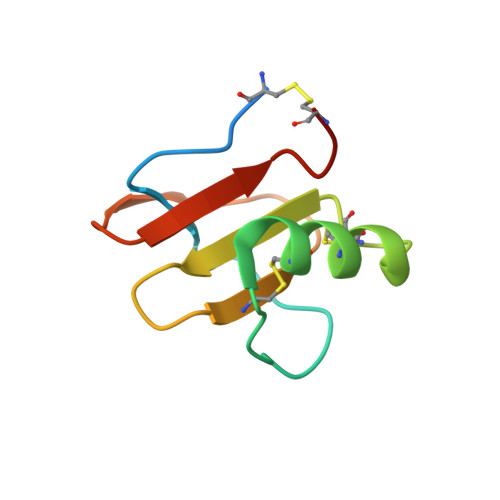Galactose Recognition by the Apicomplexan Parasite Toxoplasma gondii.
Marchant, J., Cowper, B., Liu, Y., Lai, L., Pinzan, C., Marq, J.B., Friedrich, N., Sawmynaden, K., Liew, L., Chai, W., Childs, R.A., Saouros, S., Simpson, P., Roque Barreira, M.C., Feizi, T., Soldati-Favre, D., Matthews, S.(2012) J Biological Chem 287: 16720-16733
- PubMed: 22399295
- DOI: https://doi.org/10.1074/jbc.M111.325928
- Primary Citation of Related Structures:
2LL3, 2LL4, 4A5V - PubMed Abstract:
Toxosplasma gondii is the model parasite of the phylum Apicomplexa, which contains numerous obligate intracellular parasites of medical and veterinary importance, including Eimeria, Sarcocystis, Cryptosporidium, Cyclospora, and Plasmodium species. Members of this phylum actively enter host cells by a multistep process with the help of microneme protein (MIC) complexes that play important roles in motility, host cell attachment, moving junction formation, and invasion. T. gondii (Tg)MIC1-4-6 complex is the most extensively investigated microneme complex, which contributes to host cell recognition and attachment via the action of TgMIC1, a sialic acid-binding adhesin. Here, we report the structure of TgMIC4 and reveal its carbohydrate-binding specificity to a variety of galactose-containing carbohydrate ligands. The lectin is composed of six apple domains in which the fifth domain displays a potent galactose-binding activity, and which is cleaved from the complex during parasite invasion. We propose that galactose recognition by TgMIC4 may compromise host protection from galectin-mediated activation of the host immune system.
Organizational Affiliation:
Division of Molecular Biosciences, Imperial College London, South Kensington Campus, London SW7 2AZ, United Kingdom.



















